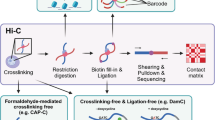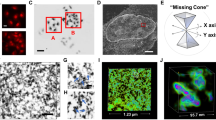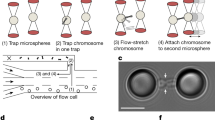Abstract
THE hypothesis has been advanced that the ‘radiomimetic’ activity of nitrogen mustards depends on the presence of two reactive groups in the mustard molecule. It has been further suggested that chromosome bridging and breakage, which result from treatment of proliferating cells with mustards, are a direct consequence of interchromatid cross-linkage by single polyalkylating molecules1,2. Such a mechanism of chromosomal damage could be considered as a plausible explanation of the effective actions of nitrogen mustards and certain other polyfunctional molecules, such as polyethylenimines and diepoxides, against mammalian tumours. However, recent studies of a number of monofunctional compounds related in structure to nitrogen mustards and diepoxides raise some questions concerning the validity of these generalizations.
This is a preview of subscription content, access via your institution
Access options
Subscribe to this journal
Receive 51 print issues and online access
$199.00 per year
only $3.90 per issue
Buy this article
- Purchase on SpringerLink
- Instant access to full article PDF
Prices may be subject to local taxes which are calculated during checkout
Similar content being viewed by others
References
Goldacre, R. J., Loveless, A., and Ross, W. C. J., Nature, 163, 667 (1949).
Loveless, A., and Revell, S., Nature, 164, 938 (1949).
Philips, F. S., Pharmacol. Rev., 2, 281 (1950).
Thiersch, J. B., and Philips, F. S., J. Pharm. Exp. Therap. (in the press).
Lewis, M. R., and Crossley, M. L., Arch. Biochem., 26, 319 (1950).
Burchenal, J. H., Crossley, M. L., Stock, C. C., and Rhoads, C. P., Arch. Biochem., 26, 321 (1950).
Buckley, S. M., Stock, C. C., Crossley, M. L., and Rhoads, C. P., Cancer Res., 10, 207 (1950).
Sugiura, K., and Stock, C. C., Cancer Research, 10, 244 (1950).
Paden, J. H. (personal communication).
Author information
Authors and Affiliations
Rights and permissions
About this article
Cite this article
BIESELE, J., PHILIPS, F., THIERSCH, J. et al. Chromosome Alteration and Tumour Inhibition by Nitrogen Mustards: the Hypothesis of Cross-linking Alkylation. Nature 166, 1112–1113 (1950). https://doi.org/10.1038/1661112a0
Issue date:
DOI: https://doi.org/10.1038/1661112a0
This article is cited by
-
Evidence of an essential difference between the genetical effects of mono- and bi-functional alkylating agents
Zeitschrift f�r Vererbungslehre (1964)
-
Chromatidenaberrationen nach Einwirkung von Äthylmethansulfonat (Methansulfonsäureäthylester) auf Primärwurzeln vonVicia faba L
Die Kulturpflanze (1960)
-
Untersuchungen zur frange der genetischen Wirksamkeit von Myleran anDrosophila melanogaster
Zeitschrift f�r Vererbungslehre (1959)
-
Mode of Action of Alkylating Agents: Formation of S-Ethylcysteine from Ethyl Methanesulphonate In Vivo
Nature (1957)
-
Action de la triéthylènemélamie sur les mitoses de segmentation de l'œuf de Pleurodèle
Experientia (1956)



